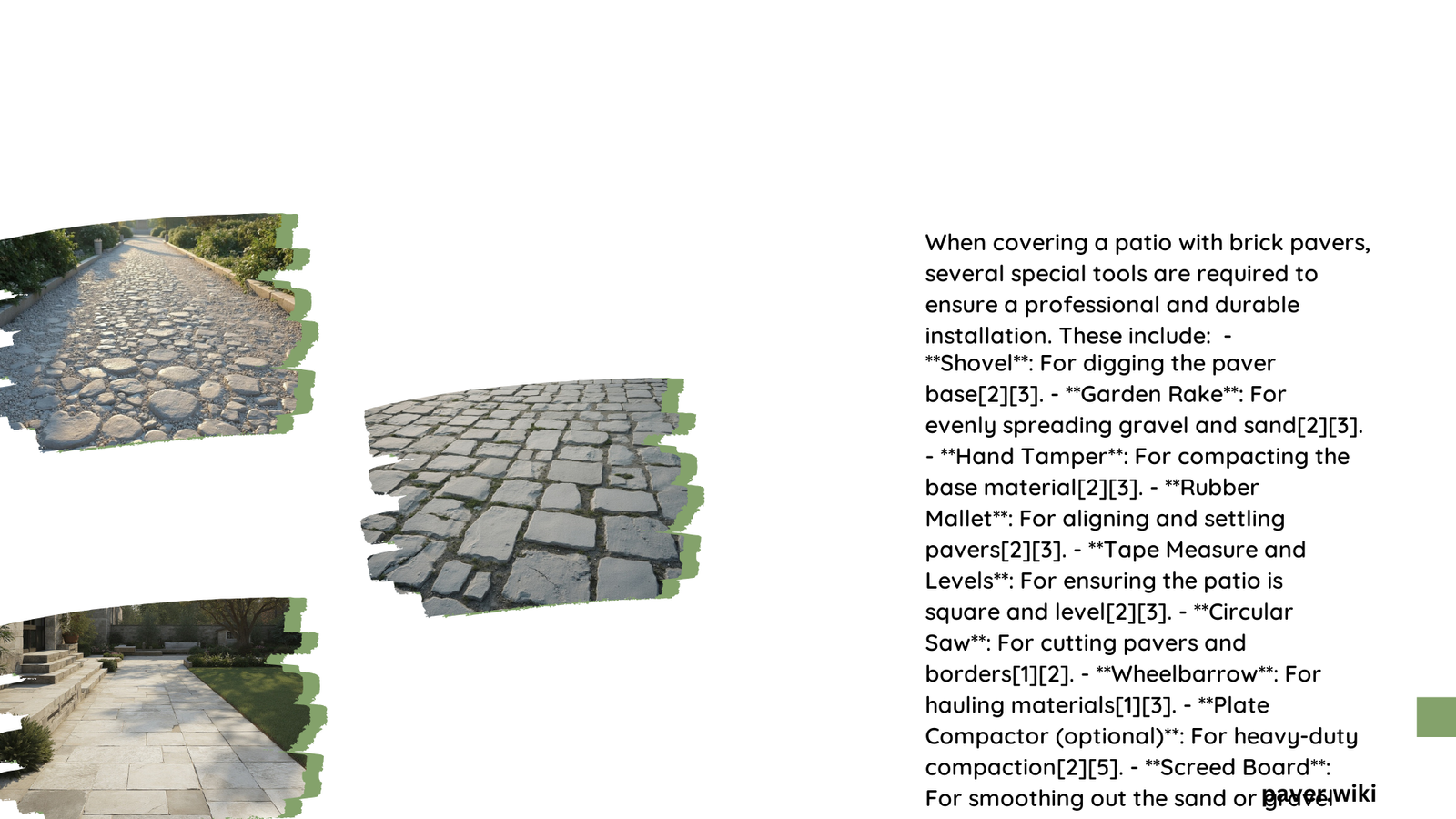When covering a patio with brick pavers, special tools are indeed needed to ensure a professional and durable installation. These tools range from basic hand tools to specialized power equipment. The right tools help in excavation, leveling, cutting, and compacting, which are crucial steps in the paver installation process. Using the appropriate tools not only makes the job easier but also ensures better quality and longevity of the paver patio.
What Are the Essential Hand Tools for Brick Paver Installation?
Hand tools form the foundation of any brick paver installation project. These tools are crucial for various tasks throughout the installation process. Here’s a list of essential hand tools:
- Shovel
- Garden rake
- Hand tamper
- Rubber mallet
- Hammer
- Tape measure
- Levels (torpedo, 4-foot, line level)
- String line and stakes
- Push broom
- Wheelbarrow
- Utility knife
How to Use Hand Tools Effectively?
- Use a flat shovel for excavating the area and moving materials.
- Employ a garden rake to spread and level base material and sand.
- Utilize a hand tamper for compacting smaller areas or edges.
- Apply a rubber mallet to tap pavers into place without damaging them.
- Measure accurately with a tape measure to ensure proper layout.
- Use various levels to maintain a flat and even surface throughout the installation.
What Power Tools Are Necessary for Paver Installation?

While hand tools are essential, power tools can significantly speed up the process and improve the quality of work. Here are the key power tools needed:
- Plate compactor
- Circular saw or masonry saw
- Leaf blower
- Pressure washer
Why Is a Plate Compactor Crucial?
A plate compactor is perhaps the most important power tool for paver installation. It serves several purposes:
- Compacts the base material to create a solid foundation
- Levels the sand bedding layer
- Settles the pavers after installation
- Helps distribute polymeric sand into paver joints
If you don’t own a plate compactor, you can usually rent one from a local equipment rental store.
What Specialized Tools Are Needed for Cutting Pavers?
Cutting pavers is often necessary to fit them around obstacles or at the edges of the patio. Here are the specialized tools for cutting pavers:
- Masonry saw or wet saw
- Dry saw
- Paver splitters
How to Choose the Right Cutting Tool?
| Tool | Best For | Advantages |
|---|---|---|
| Wet Saw | Precise cuts | Reduces dust and heat |
| Dry Saw | Quick cuts | Less messy than wet saws |
| Paver Splitters | Small cuts | No power required |
Choose based on the precision needed and the volume of cuts you’ll be making.
What Leveling Tools Are Essential for a Flat Paver Surface?
Achieving a level surface is crucial for the aesthetics and functionality of your paver patio. Here are the essential leveling tools:
- Torpedo level
- 4-foot level
- Line level
- Laser level (for larger projects)
How to Use Leveling Tools Effectively?
- Use a torpedo level for checking individual pavers
- Employ a 4-foot level for larger areas
- Utilize a line level with string lines for overall surface leveling
- Consider a laser level for precise grading on larger projects
Are There Any Safety Tools Required?
Safety should always be a priority when working with pavers. Here are some essential safety tools:
- Work gloves
- Eye protection
- Hearing protection
- Respirator (for dust)
Always wear appropriate personal protective equipment (PPE) when using power tools or handling materials.
How to Overcome Tool Accessibility Challenges?
Sometimes, you may face challenges in accessing or using certain tools. Here are some solutions:
- Rent tools: For expensive or rarely used tools like plate compactors or masonry saws, consider renting.
- Use smaller versions: In tight spaces, opt for smaller hand tools or compact versions of power tools.
- Seek assistance: Some tools are heavy or require extra hands. Don’t hesitate to ask for help.
- Plan ahead: Organize your tools and materials beforehand to streamline the installation process.
What Are Some Tool Maintenance Tips?
Proper tool maintenance ensures longevity and optimal performance. Here are some tips:
- Clean tools after each use
- Sharpen blades regularly
- Oil moving parts
- Store tools in a dry place
- Inspect tools before each use
By following these maintenance practices, you’ll extend the life of your tools and ensure they’re always ready for your next project.
In conclusion, when covering a patio with brick pavers, special tools are indeed necessary. From basic hand tools to specialized cutting and leveling equipment, each tool plays a crucial role in creating a beautiful and durable paver patio. By having the right tools and using them correctly, you can achieve professional results in your DIY paver installation project.
References:
1. https://howtohardscape.com/tools-for-pavers-paver-tools/
2. https://www.lowes.com/n/how-to/how-to-design-and-build-a-paver-patio
3. https://www.enhancecompanies.com/do-it-yourself/brick_pavers.php
